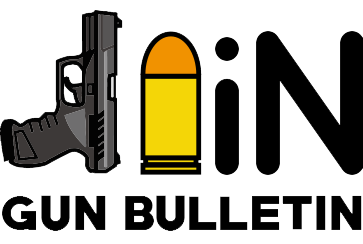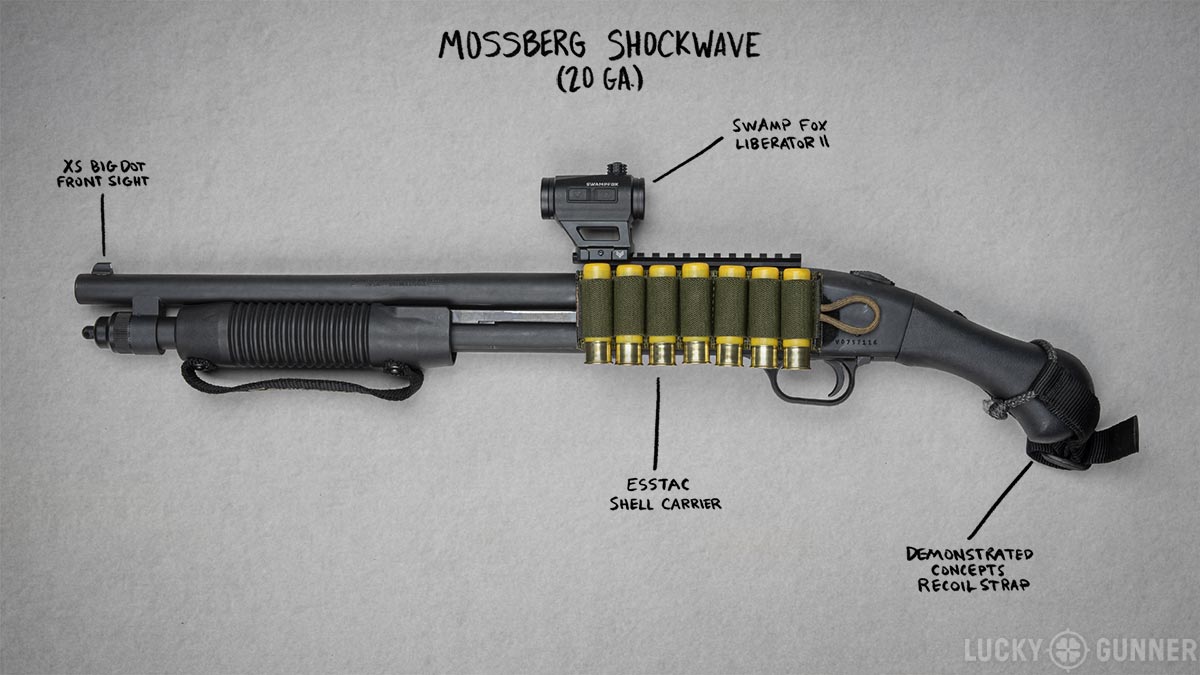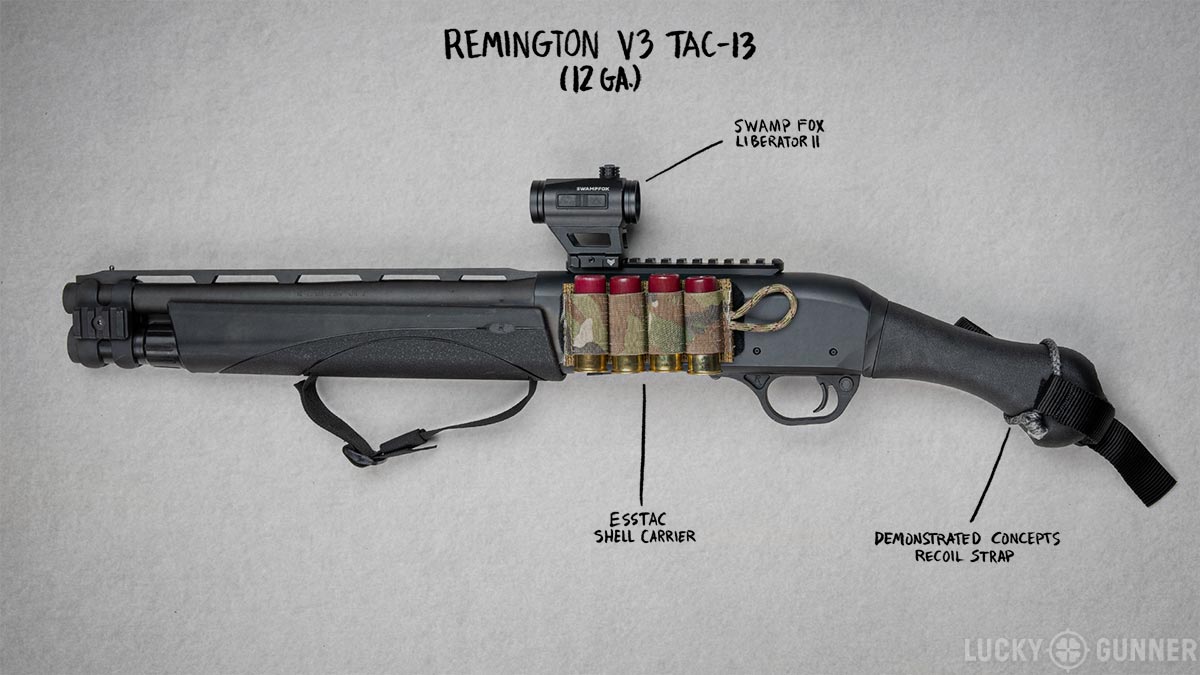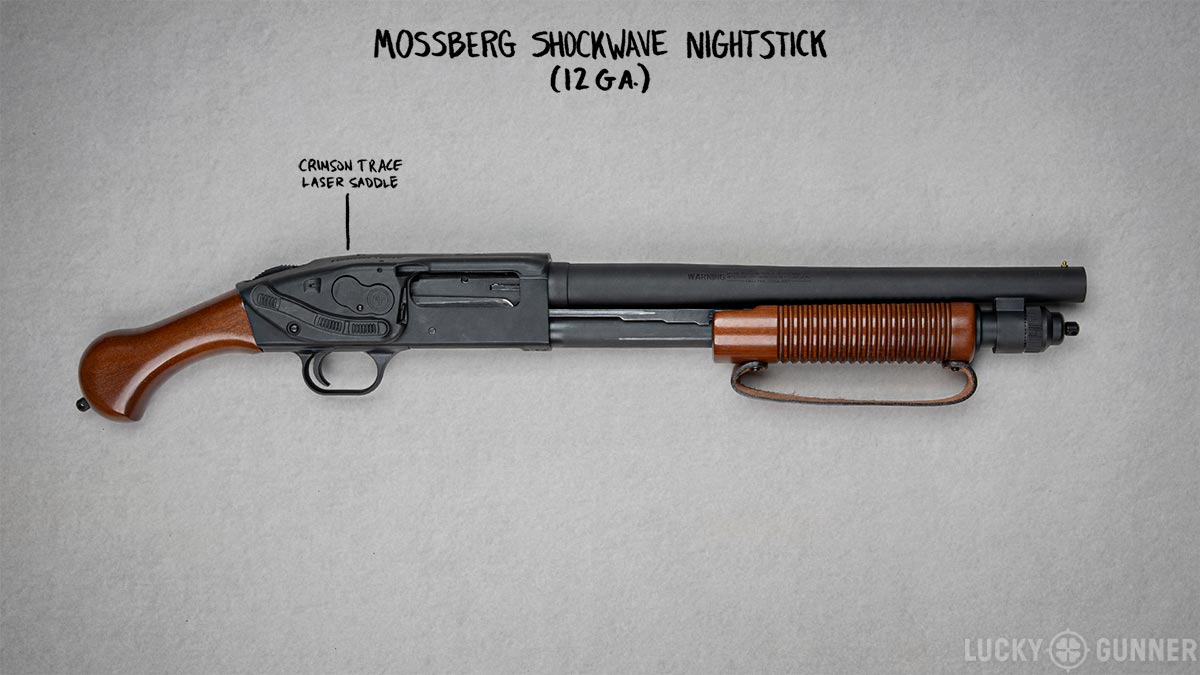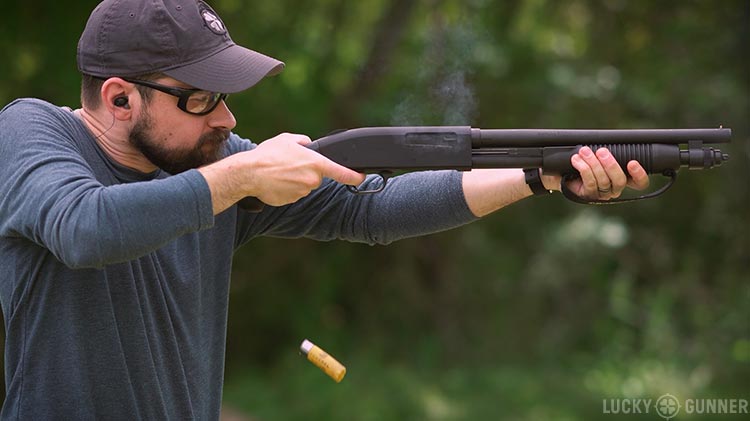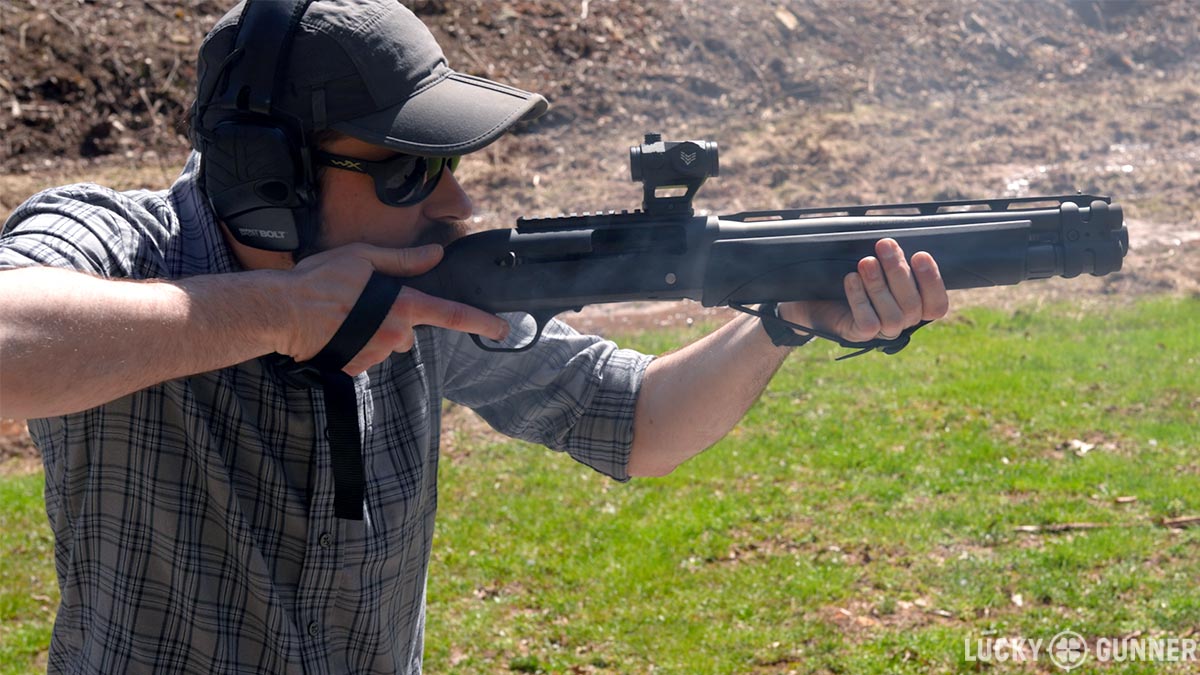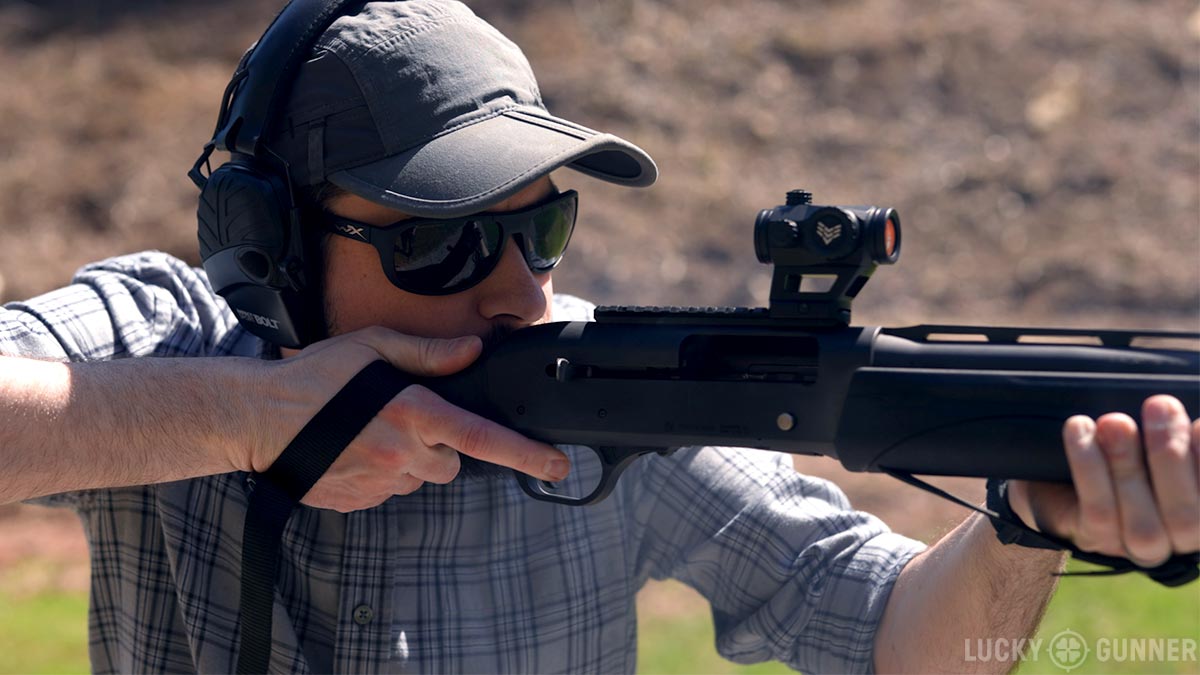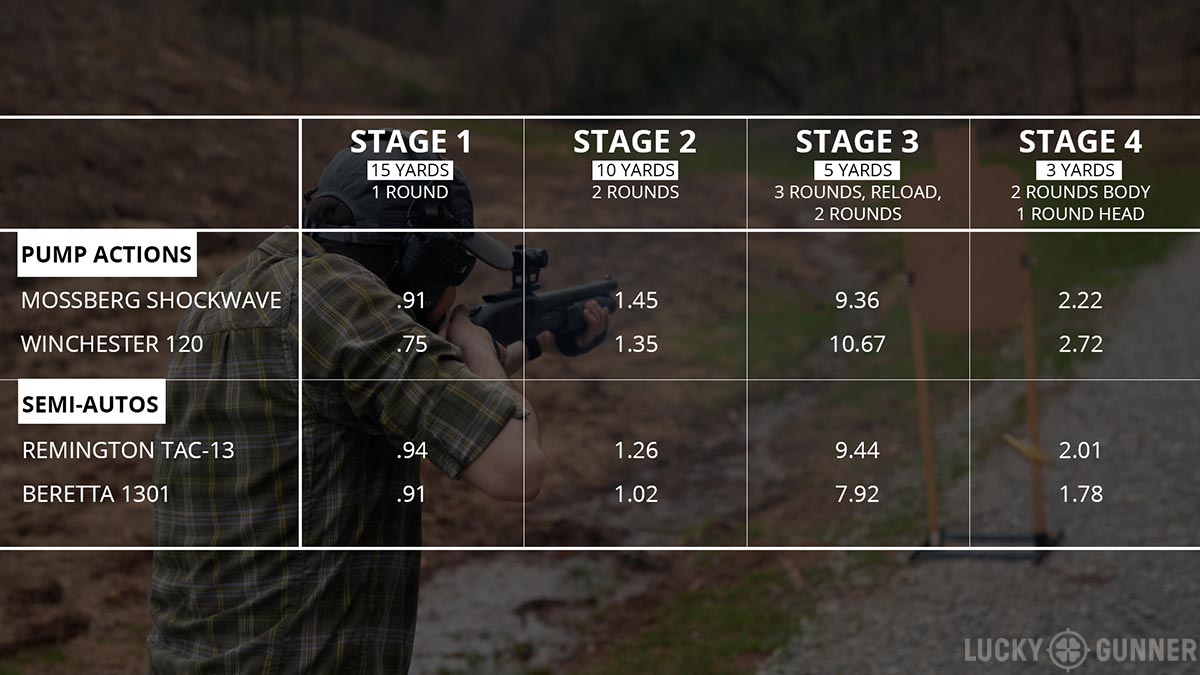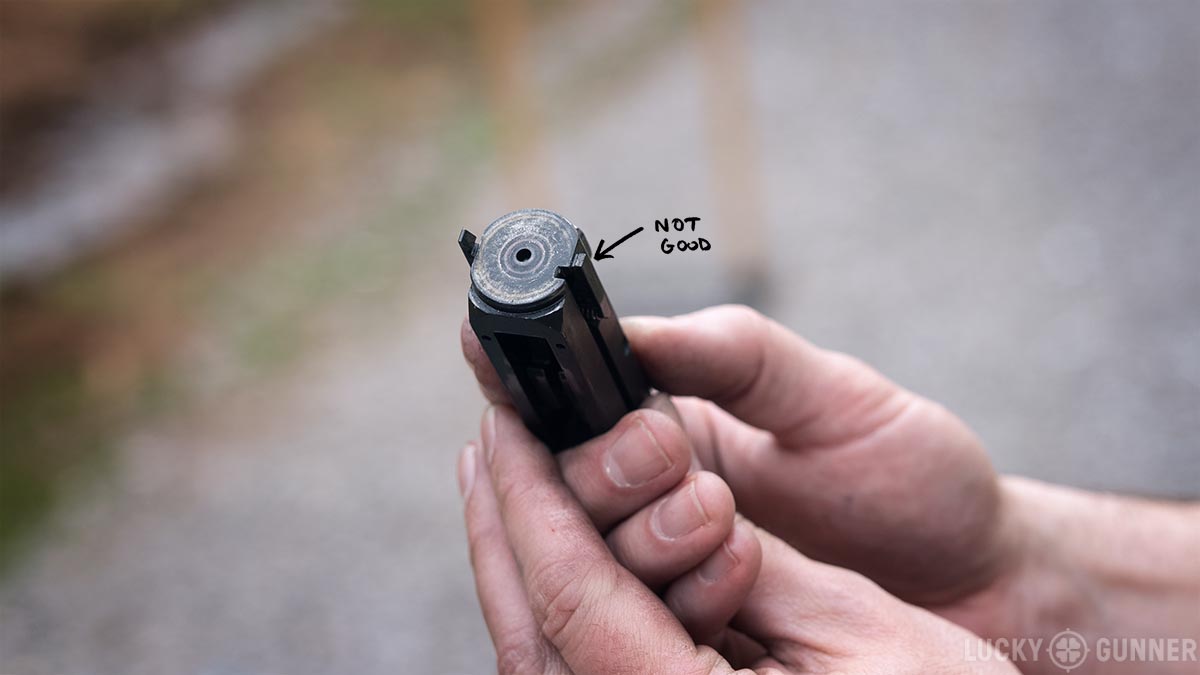A few years ago, we published a now-infamous video about why the Mossberg Shockwave is probably not an ideal home defense shotgun for most people. The tone of the article may have been a bit more emphatic than that, but that was the gist of it.
But thanks to some new techniques and accessories, I’ve since done a 180 on the birdshead grip-style “firearms.” Today, we’re talking about why I’ve come to embrace mini-shotguns like the Mossberg Shockwave and the Remington Tac-13 and Tac-14.
Details are in the video below, or scroll down to read the full transcript.
Hello everybody, I am Chris Baker from LuckyGunner.com. Nearly four years ago, I made a video called The Mossberg Shockwave is Mostly Useless. A whole lot of people really hated this video. If you’re brave enough to wade through the comments there, you’ll find Shockwave fans questioning my competence, my intelligence, and my manhood.
But that’s okay. You kind of expect that with any negative product review, especially with a title like that one.
I wanted to revisit this topic today because my opinion of the Shockwave has changed over the last couple of years. That goes for, not just the Shockwave, but the whole category of stockless short-barreled shotguns with the birdshead grip. These are legally classified as simply “firearms” but I’m going to call them stockless shotguns because that’s what they are.
I’ve got three demo guns today. The first is a 20 gauge Mossberg 590 Shockwave with a Swamp Fox red dot on a rifle-height mount. It also has an Esstac 7-round shell carrier with velcro attachment, an XS Big Dot front sight, and a Demonstrated Concepts Recoil Strap.
The second gun is a 12 gauge semi-auto Remington V3 Tac-13. It has the same recoil strap and Swamp Fox dot as the Mossberg. And I’m using a 4-round shell carrier from Esstac.
And finally, we have a 12 gauge Mossberg 590 Shockwave Night Stick. This one is pretty much completely stock except for the Crimson Trace Laser Saddle.
Before I get into why I started to warm up to these guns, I want to go back and summarize the issues I went over in that original video. And I want to be clear that both then and now, I’m looking at these things in the context of personal defense, especially inside the home. If you just want to have fun with them at the range, that’s a completely different perspective.
Shockwave Challenges
In the defense context, what it comes down to for me is that the benefit of their small size is not worth the trade-off of making them more difficult to shoot than a traditional shotgun. You can fire them from the hip, but it’s difficult to know for sure what you’re aiming at (unless you’re using a laser sight, but we’ll come back to that later).
If you’re just chucking a wide patterning buckshot out there, it’s not all that hard to get some pellets on target, but it’s also really easy to throw some pellets off target. We are accountable for every one of those pellets, so filling the air with lead and hoping for the best is not an acceptable home defense strategy.
The other common technique is to hold the gun out in front of you, almost in the same position it would be if it did have a shoulder stock. That way, you can actually aim the gun properly.
I much prefer this approach, but it’s still a pretty clumsy way to shoot. Recoil control is difficult. Cycling the action is awkward on the pump-actions. Compared to a traditional shotgun, it feels slow and inconsistent when you’re trying to aim the gun under time pressure.
It’s not that these guns are unusable, or that there is no benefit to their size. It’s just that you’re making a pretty questionable tradeoff. The short overall length does make the gun easier to maneuver in some very specific circumstances that might be relevant to you. But without a shoulder stock, it’s almost guaranteed you are going to be worse at actually hitting your target and only your target.
That pretty much summarizes my assessment of these things four years ago when I did that initial review. And that was more or less the consensus opinion among shotgun instructors and other dedicated shotgun users I know. If you were serious about the defensive use of shotguns, the Shockwave and guns like it were seen as a joke or, at best, a very niche tool for only the most accomplished shotgunners and special tasks like door breaching.
A New Technique
So what changed? Well, if you’re a regular viewer, you probably already know the answer. What changed is that I had some conversations with the tactical space wizard known as Rhett Neumayer of Demonstrated Concepts. Rhett is the heretical lunatic behind the cheek pistol concept I talked about a few months ago. But before he started working on that, he developed some techniques for shooting these birdshead grip shotguns.
Rhett’s technique looks similar to that last one, but instead of extending the gun out in front, you bring the grip back to your cheek.
This has several advantages. It gives you a third point of contact that acts as an index point to help you aim more consistently. You don’t have to hunt for the sight or bead – it’s right in front of you every time just like it would be with a traditional shoulder stock.
Another advantage is better recoil control versus having the gun pressed out. If you’re familiar with the push-pull technique for traditional shotguns, Rhett uses something similar he calls push-clench. You push forward on the forend with the support hand. With the primary hand, you put pressure down and in. Think about rotating the elbow in toward your body. That’s the direction the force should be going. Depending on your wrist mobility, your elbow might end up pointing more out than down – I usually have kind of a chicken wing thing going on when I do this. It looks weird, but I promise, it really does work.
One of the keys to making this work is the recoil strap. Rhett came up with this idea for a basic nylon strap secured with a cord and some Velcro. You can buy them at Demonstrated Concepts or on Amazon. The technique does work without the strap, but then you’re really depending more on grip strength alone to manage recoil and it’s less effective.
Rhett also uses a light or a handstop on the side of the forend. He presses that into the web of his hand and it acts as another point of recoil control.
Either way, it feels a lot different than managing recoil with a shoulder stock. You will get some rearward movement of the gun and you kind of just have to let it happen. It’s important to position the gun so it recoils alongside your face and not into your face. I have my thumb and fingertips just barely touching my chin and cheek. I just want a repeatable spot to place the gun so I can get a consistent index. I’m not pressing the grip into my cheek the way I would with a traditional stock.
I have tried this with just a bead sight and with a dot on a low mount and a higher mount like this one. I’ve gone back and forth a couple of times but I think the higher mount works better for me. I can find the dot quicker and it’s a little more comfortable. That’s something you might have to experiment with.
I’d suggest starting out with low recoil loads. I rarely use anything but low recoil birdshot and buckshot for all of my shotgun practice anyway. Low recoil #00 buck consistently penetrates 20 inches in ballistic gel. That’s more than enough for defensive use. Even if you prefer full power loads, save those until after you’ve gotten the hang of the cheek shooting technique.
There’s a lot more nuance to this technique that I’m still figuring out. Rhett is still experimenting and the technique continues to evolve. He’s got plenty of details and tips in his videos on YouTube and Instagram if you want to dive into that.
Stockless in the Shotgun Skills Test
The real test for something like this is to use an objective, measurable standard. So I decided to use the four-stage Home Defense Shotgun Skills Test that I came up with last year. I ran it with the Shockwave and the Tac-13, and then for comparison, I also ran it with the Beretta 1301 and the old Winchester 120 Ranger.
It turns out, what made the bigger difference was not stock versus no stock. It was semi-auto versus pump action. If we compare them by action type, the times are very close. The only place there was a significant difference was on the reload stage. I fumbled a bit with the Winchester, so my time there was on the slower side. The Beretta just has superior ergonomics and I’ve got a ton of time behind that gun, so I was a little faster on that one.
What’s important to note is that the Shockwave and the Tac-13 slowed me down very little in terms of sight acquisition or recoil control. That’s not going to be the case for everyone, especially the first time they try the technique. But this should give you an idea of what’s possible after putting in a few hours of practice.
Stock Versus Stockless
So if the cheek shooting technique, practically speaking, allows me to shoot a stockless shotgun almost as well as a traditional shotgun, that raises an important question. Why don’t I just use stockless shotguns all the time?
There are a few reasons, but for me the big one is that a gun with a stock is just a lot more comfortable to shoot. That’s not to say the stockless guns are painful. It’s not like getting beat up by a magnum snub nose revolver. A better word would be fatiguing. The push-clench technique starts to wear me out after a couple of boxes of shells. So I have to cut my practice sessions a little shorter than I would if I was working with a stocked gun.
For my actual home defense guns, I don’t plan on switching over to stockless shotguns at this point. But it’s something I would consider if I lived in a home with a lot of tight corne rs and hallways, or if I believed I was at high risk of being attacked in my vehicle or if I wanted to travel discreetly with something more capable than a handgun. That’s a big change from how I felt about these guns before I was clued in to Rhett’s technique.
Hip Firing With a Laser Sight
Before I get into some hardware issues, I want to briefly cover the hip firing with a laser sight. This is something several people mentioned in response to that first Shockwave video. Crimson Trace makes this thing they call the Laser Saddle. It fits onto the receiver and the emitter is right here behind the ejection port. I had planned to do some testing with this setup, but the gun broke.
Before I got through the first box of shells, I started having problems with ejection. It turns out one of the two extractors had broken in half on this brand new Shockwave. We ordered a replacement, so maybe I’ll try that again sometime in the future. For now, I can’t really comment much on hip firing. So far, it feels slow and clumsy even with the laser, but my experience is pretty limited.
Hardware Options
I’m not really surprised I had an issue with this Shockwave. A lot of you were skeptical when I mentioned a few months back that Mossbergs are not quite what they used to be. This is a perfect example. Most of them are fine. Some of them aren’t. And the percentage of “not fine” guns appears to be on the rise.
If you really want a pump-action stockless shotgun, you might want to instead consider a Remington Tac-14, based on the model 870. That might come as a surprise because Remingtons have been very rough for the past several years. But they are under new ownership now. I’m hearing some encouraging reports about the most recent batches of Remington 870s. They are apparently better than they’ve been in a very long time. Both the Tac-14 and the Shockwave are going for about $500 right now. Between the two, I’d take my chances with the Remington.
It also looks like the new management at Remington is going to start making semi-autos again, including the Tac-13. I’ve been told they are on the dealer price list and they can be ordered, but there’s no official date for when they will ship. The Tac-13 has been out of production since sometime in 2020 and they’ve been really difficult to find lately. Used ones are selling for over 2 grand in some cases. Whenever the new ones start shipping, I’d expect the price to be roughly half that.
If you can wait, and it’s in your budget, I would go with the Tac-13 over the pump actions. Cheek shooting a semi-auto is much, much easier than a pump. A pump will make you work twice as hard and running the action manually will be less reliable than the semi-auto action.
The Black Aces Tactical Pro Series S is a tempting option. They cost about as much as the pump actions, but they’re semi-auto. I haven’t shot one, so I can’t say much about them. But, be aware that they are made in Turkey. At least a dozen different Turkish gun makers have flooded the market with cheap shotguns the last couple of years. They are generally not considered very robust. I know Rhett has tried a few of them and some have worked better than others. If you’re not going to put thousands of shells down range and you just want to try out the stockless shotgun concept with a semi-auto, they’re probably not a bad deal. Just manage your expectations.
That’s all I’ve got for now. I hope you guys found that helpful. The next time you need some ammo, be sure to get it from us with lightning fast shipping at LuckyGunner.com.
The post Why I Stopped Hating the Shockwave (And Other Stockless Shotguns) appeared first on Lucky Gunner Lounge.
